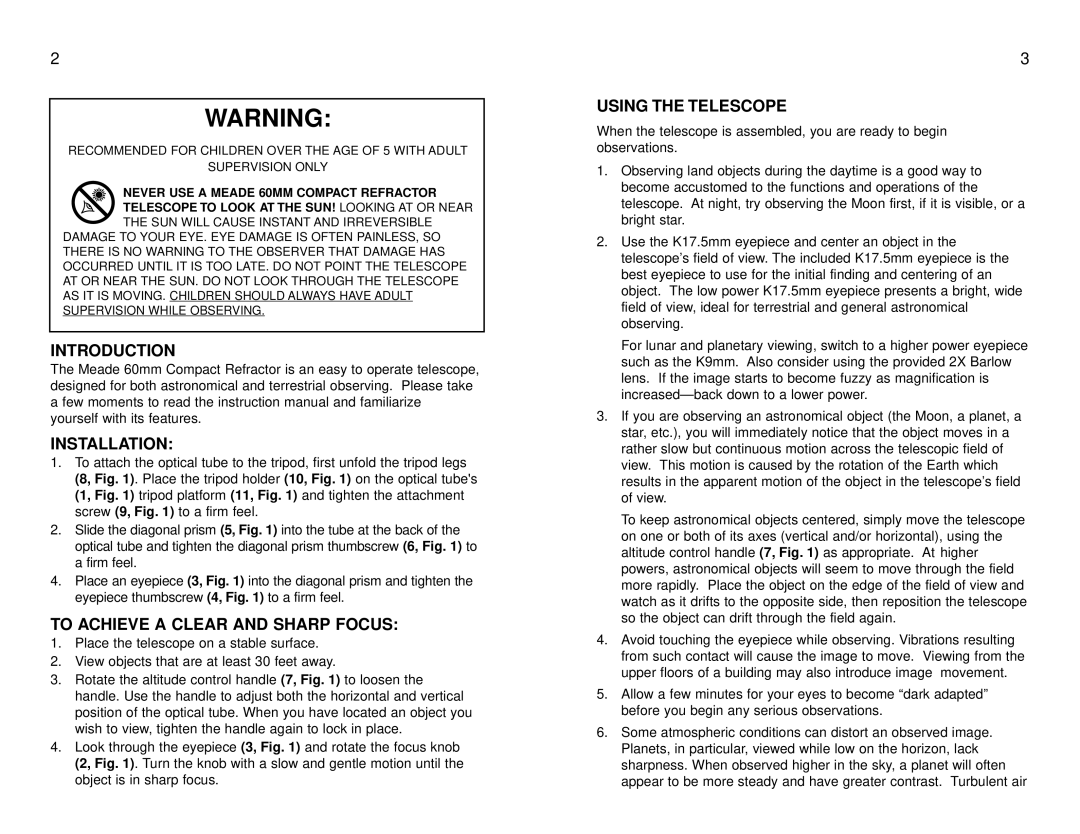60AZ-T specifications
The Meade 60AZ-T is an exceptional entry-level telescope designed for both novice astronomers and casual stargazers. This user-friendly telescope offers a range of features that make it an attractive option for those looking to explore the wonders of the night sky.One of the standout features of the Meade 60AZ-T is its 60mm aperture. This size provides ample light-gathering capability, making it possible to observe celestial objects with greater detail. The telescope's focal length of 700mm combined with a focal ratio of f/11.7 allows for relatively high magnifications, making it suitable for viewing planets, the Moon, and some deep-sky objects.
The telescope is mounted on an Altazimuth mount, which allows for smooth and easy movement along both vertical and horizontal axes. This intuitive design is perfect for beginners, as it simplifies the process of locating and tracking objects in the night sky. The ergonomic handle and plastic slow-motion control knobs enable fine adjustments, ensuring accurate positioning of the telescope.
The Meade 60AZ-T features a sturdy, adjustable tripod that ensures stability during use. Its lightweight construction allows for easy portability, making it convenient for both backyard observing sessions and trips to dark-sky locations.
Included with the telescope are two 1.25-inch eyepieces with different magnification levels, offering versatility in viewing options. Additionally, a red dot finder scope is part of the package, assisting users in locating objects quickly and efficiently.
Technologically, the Meade 60AZ-T aligns with Meade's reputation for quality optics. The telescope’s glass elements are coated with anti-reflective coatings to enhance light transmission and improve image quality. This technology results in brighter, clearer views of celestial objects.
In conclusion, the Meade 60AZ-T stands out as an excellent choice for those entering the world of astronomy. Its combination of a 60mm aperture, Altazimuth mount, and user-friendly design cater to beginners, while its quality optics provide satisfying views for all users. With this telescope, exploring the cosmos becomes an accessible and enjoyable pastime. Whether it's the craters of the Moon or the rings of Saturn, the Meade 60AZ-T promises a delightful astronomical experience.

